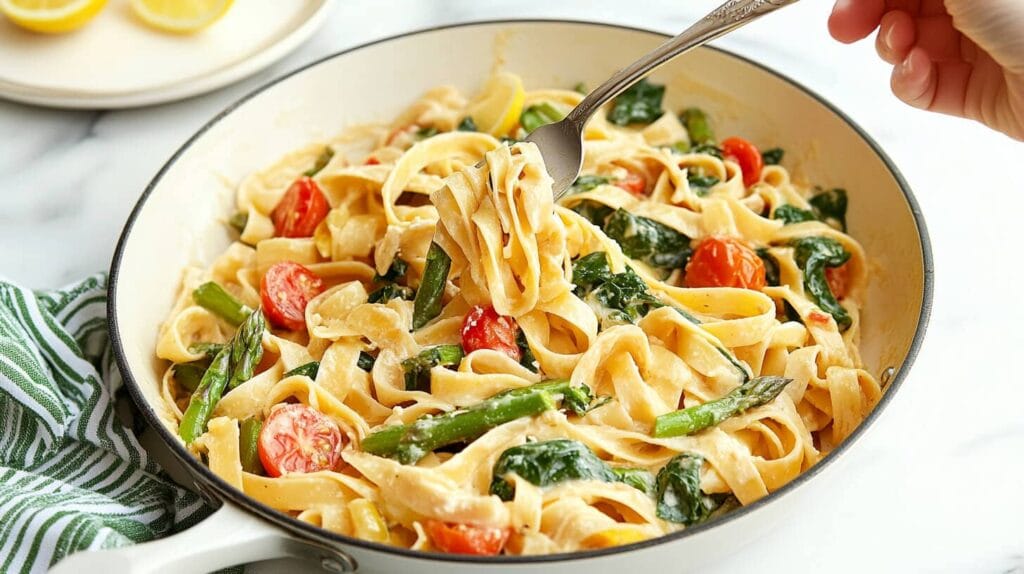Pappardelle pasta is a true delight for pasta lovers, offering wide, ribbon-like noodles that perfectly hold onto sauces. Whether you’re a fan of creamy Alfredo, hearty mushroom sauces, or a fresh lemon twist, there’s always a way to enjoy this classic Italian pasta. But what exactly makes pappardelle pasta so unique? Let’s dive into its rich history, explore delicious recipes, and learn how to cook it like a pro.
What is Pappardelle Pasta?
If you’ve ever encountered broad, flat pasta noodles that resemble thick ribbons, you’ve likely encountered pappardelle pasta. Originating from Tuscany, Italy, pappardelle is traditionally made with eggs and flour, creating a rich, silky texture that pairs beautifully with hearty sauces. Unlike thinner pasta varieties, its width allows for better flavour absorption, making every bite satisfying.
What sets pappardelle pasta apart from other noodles? It’s all in the texture and the way it holds sauces. Whether it’s a meaty Bolognese or a light seafood dish, pappardelle offers a balance of chewiness and softness that’s hard to resist.
Table of Contents
The Origins and History of Pappardelle Pasta
Pappardelle dates back centuries to the Tuscan region of Italy, where it was a staple in hearty dishes, often served with wild game like boar or rabbit. The name “pappardelle” comes from the Italian verb papered, which means “to gobble up,” and once you try it, you’ll understand why.
Traditionally, pappardelle pasta noodles were hand-rolled and cut into wide strips, then paired with rich sauces to create comforting meals for families. Over time, it became popular across Italy and eventually gained recognition worldwide.
Why Pappardelle Pasta is Special Compared to Other Pasta Types
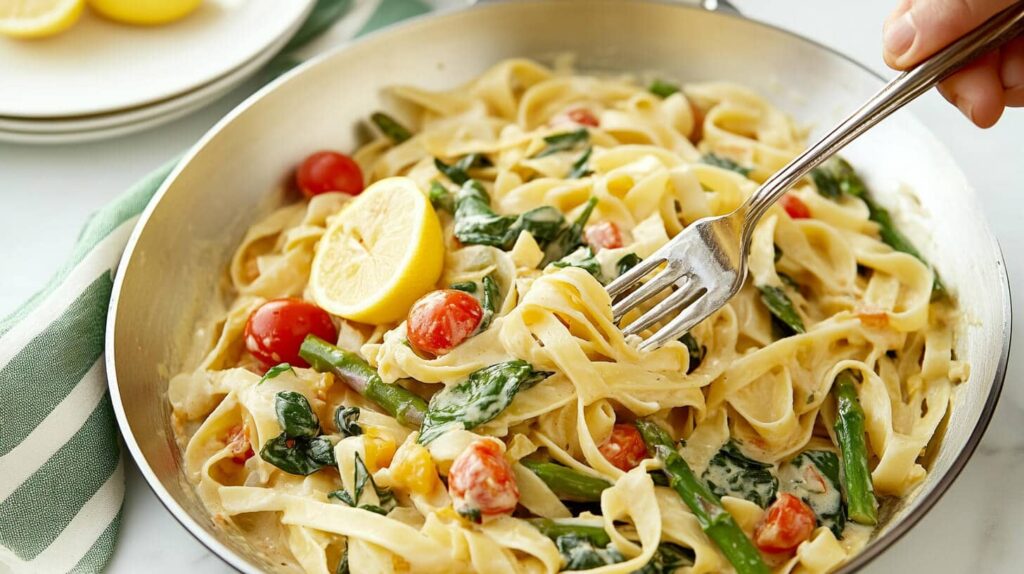
Pasta comes in all shapes and sizes, so what makes pappardelle pasta stand out?
- Wide and Sturdy: Unlike spaghetti or fettuccine, pappardelle’s wide shape makes it perfect for chunky sauces.
- Versatility: It can be used in a variety of dishes, from creamy to tomato-based sauces.
- Perfect Texture: Thanks to its egg-based dough, it has a satisfying bite without being too heavy.
- Gourmet Appeal: Its elegant appearance makes it a favourite for fancy dinners and special occasions.
Try this rich and creamy Langostino Mushroom Sour Cream Gravy Recipe, perfect for adding a luxurious touch to your favorite pasta dishes.
Pappardelle Pasta Noodles: Characteristics and How to Cook Them
Cooking pappardelle pasta noodles might seem straightforward, but getting them just right requires attention to detail. Since they are wider than most pasta, they need ample water to prevent sticking and ensure even cooking.
How to Cook Pappardelle Pasta Perfectly:
- Boil Water Generously: Use at least 4 quarts of water per 8 ounces of pasta.
- Add Salt: A generous pinch of salt enhances the flavour.
- Stir Frequently: Pappardelle can stick together due to its width, so gentle stirring is crucial.
- Check for Doneness: Cook until al dente—firm yet tender.
- Drain and Toss: Drain quickly and toss with sauce to prevent clumping.
Popular Recipes Using Pappardelle Pasta
There’s no shortage of delicious recipes using pappardelle pasta, and whether you’re in the mood for something creamy, zesty, or loaded with protein, there’s a dish for you.
Pappardelle Pasta with Mushrooms
This dish is a match made in heaven. Earthy mushrooms combined with garlic, cream, and a hint of Parmesan create a rich, umami-packed meal that beautifully complements the pasta’s texture.
Ingredients:
| Ingredient | Amount |
|---|---|
| Pappardelle pasta | 250g |
| Mixed mushrooms | 200g |
| Garlic cloves | 3 minced |
| Heavy cream | 1 cup |
| Parmesan cheese | ½ cup |
| Olive oil | 2 tbsp |
| Salt & Pepper | To taste |
Instructions:
- Cook the pasta according to package instructions.
- Sauté mushrooms and garlic in olive oil until fragrant.
- Add cream and Parmesan, letting it simmer.
- Toss in the cooked pasta and mix well.
- Garnish with fresh parsley and serve hot.
Learn the step-by-step process of making delicious Pizzabirria, a fusion of classic pizza and flavorful birria meat.
Shrimp Pappardelle Pasta
Seafood lovers will adore this combination of tender shrimp, lemon zest, and a creamy garlic sauce.
Key Ingredients:
- Pappardelle pasta
- Shrimp
- Garlic
- Lemon zest
- Heavy cream
- Butter
This dish is light yet indulgent, offering the perfect balance of flavours.
Pappardelle Pasta Alfredo
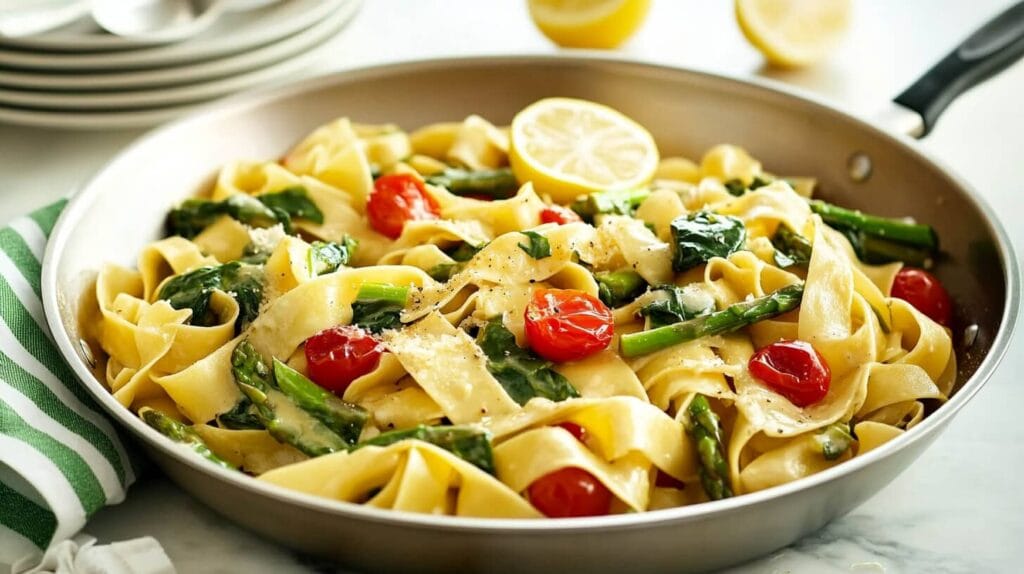
A rich and creamy delight, pappardelle pasta Alfredo is all about indulgence. With a luxurious blend of butter, cream, and Parmesan cheese, this dish is perfect for a comforting meal.
What is the Shelf Life for Pappardelle Pasta?
Wondering how long your pasta will last? Fresh pappardelle pasta has a shorter shelf life compared to dried versions.
| Type | Shelf Life | Storage Method |
|---|---|---|
| Fresh Pappardelle | 2-3 days | Refrigerated |
| Dried Pappardelle | 12-24 months | Pantry |
| Frozen Pappardelle | Up to 6 months | Freezer |
Tips for Cooking Perfect Pappardelle Pasta Every Time
Getting pappardelle pasta just right takes a bit of practice. Here are some tips:
- Always use plenty of water when boiling.
- Don’t overcook; al dente is the goal.
- Toss with a bit of olive oil to prevent sticking.
- Pair with the proper sauce for the best experience.
Discover whether birria is made from cow or pork, and learn about the traditional ingredients that give this dish its rich, authentic flavor.
Common Problems and Solutions When Cooking Pappardelle Pasta
Cooking pasta can sometimes come with challenges, but don’t worry—there are solutions for everything!
Why is My Tagliatelle Sticking Together?
Make sure to stir often and add a little olive oil after draining.
How to Prevent Overcooking Tagliatelle
Always check the pasta a minute or two before the suggested cooking time.
The Best Sauces to Pair with Pappardelle Pasta
One of the best things about pappardelle pasta is how well it pairs with a variety of sauces. Thanks to its vast, ribbon-like shape, it holds onto thick, hearty sauces better than most pasta types. Whether you prefer something rich and creamy or light and zesty, there’s a perfect sauce to elevate your dish.
Classic Meat-Based Sauces
If you’re looking for a satisfying, filling meal, meat-based sauces are a top choice for pappardelle pasta noodles. The thickness of the pasta balances well with the richness of the sauce.
Popular Options:
- Bolognese Sauce: A slow-cooked sauce made with ground beef, tomatoes, onions, and herbs.
- Ragu Alla Toscana: Traditional Tuscan-style sauce featuring slow-braised meats like pork, beef, or even wild boar.
- Short Rib Ragu: Tender, fall-apart short ribs in a flavorful tomato-based sauce.
Creamy Sauces
If you love smooth, velvety textures, creamy sauces are an excellent pairing. They coat the noodles beautifully and create a luxurious mouthfeel.
Best Choices:
- Alfredo Sauce: A decadent combination of butter, heavy cream, and Parmesan cheese.
- Mushroom Cream Sauce: Perfect for vegetarians, offering an earthy and indulgent flavour.
- Garlic Parmesan Cream: A simple yet delightful mix of garlic, cream, and cheese.
Light and Fresh Sauces
Looking for something refreshing? Light sauces with citrus or olive oil can bring out the best in lemon pappardelle pasta and other simple dishes.
Top Picks:
- Lemon Butter Sauce: A tangy and aromatic option with fresh lemon juice and melted butter.
- Pesto Sauce: A blend of fresh basil, garlic, Parmesan, and pine nuts for a herby touch.
- Olive Oil and Garlic: Sometimes, simplicity wins, and this classic combo is proof.
Nutritional Benefits of Pappardelle Pasta
Many people wonder if pasta can be part of a healthy diet. The good news is that Tagliatelle, especially when made with whole grains or enriched flour, offers a variety of nutrients. While it’s often enjoyed as a comfort food, it can also be part of a balanced meal.
Check out this easy Boston Roll Sushi Recipe, featuring fresh ingredients and a perfect balance of flavors for sushi lovers.
Nutritional Breakdown per Serving (100g Cooked)
| Nutrient | Amount |
|---|---|
| Calories | 220 kcal |
| Carbohydrates | 45g |
| Protein | 8g |
| Fats | 2g |
| Fiber | 3g |
| Iron | 10% Daily Value |
Health Benefits
- Energy Boosting: Pappardelle is rich in carbohydrates, providing a great source of energy.
- Protein Content: The egg-based variety adds extra protein, which supports muscle growth.
- Digestive Health: Whole wheat versions offer fibre that aids digestion and keeps you full longer.
To make your pappardelle pasta meals healthier, consider pairing it with lean proteins, vegetables, and heart-healthy fats like olive oil.
How to Store Fresh and Dried Pappardelle Pasta
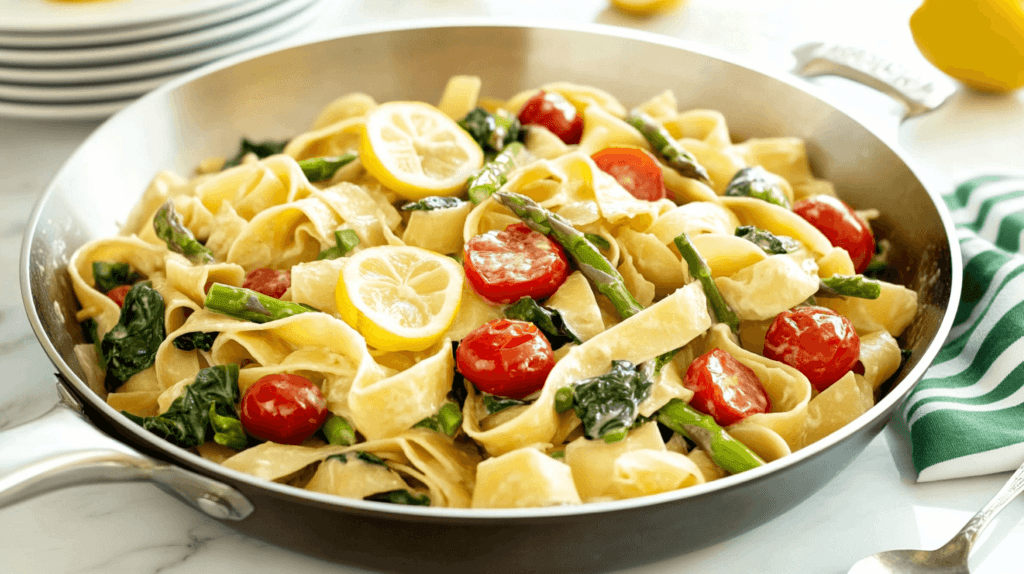
Proper storage is key to preserving the taste and texture of Tagliatelle. Whether you’ve made it fresh or bought it from the store, following the appropriate storage methods can prevent spoilage and extend its shelf life.
Storing Fresh Pappardelle
Fresh pasta is more delicate and perishable compared to its dried counterpart.
Storage Tips:
- Refrigerate: Keep fresh pappardelle in an airtight container for up to 2-3 days.
- Freeze: To extend shelf life, freeze the pasta in a sealed bag for up to 6 months.
Storing Dried Pappardelle
Dried pasta is much easier to store and has a long shelf life if kept in the right conditions.
Storage Guidelines:
- Pantry: Store in a cool, dry place in its original packaging.
- Airtight Containers: Prevent exposure to moisture to avoid spoilage.
- Check Expiry Dates: Though it lasts long, old pasta may lose its freshness over time.
Gluten-Free Alternatives to Tagliatelle
Several alternatives to traditional Lasagnette deliver similar texture and flavour for those with gluten sensitivities or dietary restrictions.
Popular Gluten-Free Options:
- Rice Flour Pappardelle: A light and chewy alternative with a mild taste.
- Chickpea Pasta: Higher in protein and fibre, making it a nutritious choice.
- Zucchini Ribbons: A low-carb, veggie-based option that mimics the ribbon-like texture.
- Corn-Based Pasta: Naturally gluten-free and has a slightly sweet flavour.
Each alternative provides a unique twist on the classic dish, ensuring everyone can enjoy their favourite pasta meals.
Where to Buy the Best Pappardelle Pasta
Finding high-quality Lasagnette is crucial to making the perfect dish. While many brands offer options, choosing the right one ensures the best texture and taste.
Where to Shop:
- Italian Specialty Stores: Authentic brands are often found in gourmet stores.
- Online Retailers: Websites like Amazon and Italian food shops offer a wide variety.
- Supermarkets: Many grocery stores now carry both fresh and dried versions.
Top Brands to Consider:
- Barilla – A trusted household name with excellent quality.
- De Cecco – Known for its premium Italian pasta with a perfect bite.
- Rustichella d’Abruzzo – A high-end option for authentic, handmade pasta.
Step-by-Step Guide: How to Make Homemade Pappardelle Pasta
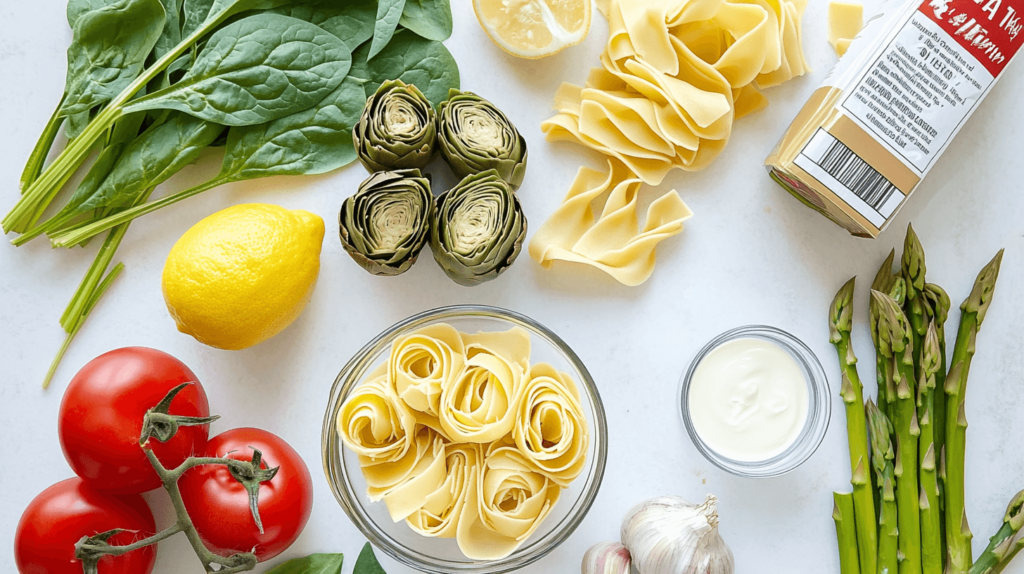
There’s something magical about making pappardelle pasta from scratch. The process is therapeutic, and the result is a silky, tender pasta that’s far superior to store-bought varieties. If you’ve never tried it before, don’t worry—it’s easier than you think! With just a handful of ingredients and a little patience, you’ll have fresh homemade pappardelle ready to impress your family and friends.
Ingredients You’ll Need
Before you start, gather these simple ingredients:
| Ingredient | Amount |
|---|---|
| All-purpose flour | 2 cups |
| Eggs | 3 large |
| Olive oil | 1 tablespoon |
| Salt | A pinch |
| Water | As needed |
Step 1: Making the Dough
- Create a flour well: Pour the flour onto a clean surface and place a well in the centre.
- Add Eggs and Olive Oil: Crack the eggs into the well and drizzle the olive oil on top.
- Mix Gradually: Use a fork to mix the eggs with the flour slowly, incorporating it until a dough forms.
- Knead the Dough: Once it comes together, knead the dough for about 8-10 minutes until it’s smooth and elastic.
- Rest the Dough: Cover it with a clean cloth and let it rest for 30 minutes to allow the gluten to relax.
Step 2: Rolling and Cutting the Pasta
- Divide the Dough: Cut the dough into smaller portions to make it easier to handle.
- Roll it Thin: Using a rolling pin or pasta machine, roll out each portion into a thin sheet.
- Cut into Ribbons: Fold the dough gently and slice it into wide strips, about ¾ to 1 inch wide. Unfold to reveal your homemade pappardelle pasta noodles.
Step 3: Cooking Fresh Pappardelle Pasta
Fresh pasta cooks much faster than dried, so keep an eye on it.
- Bring a Pot of Water to a Boil. Add plenty of salt for flavour.
- Cook for 2-3 Minutes: Fresh pasta cooks quickly, so don’t overdo it.
- Drain and Toss: Toss it immediately with your favourite sauce.
Congratulations! You’ve just made delicious homemade pappardelle pasta from scratch.
Common Problems and Solutions When Cooking Pappardelle Pasta
Even seasoned cooks encounter a few hiccups when preparing pappardelle pasta noodles. Here are some common issues and how to solve them.
Why is My Pappardelle Pasta Sticking Together?
Fresh or dried pappardelle tends to clump due to its vast surface area.
Solution:
- Use plenty of water while boiling (at least 4 quarts per 8 ounces of pasta).
- Stir the pasta frequently while cooking.
- After draining, toss it with a bit of olive oil to prevent sticking.
How Do I Prevent Overcooking Lasagnette?
Since it’s thicker, pappardelle needs careful timing to avoid becoming mushy.
Solution:
- Always cook to al dente (firm to the bite).
- Test for doneness 1-2 minutes before the package’s suggested time.
- Drain immediately and rinse under cool water if needed.
Why Does My Pasta Taste Bland?
If your Lasagnette pasta tastes plain, it’s likely due to under-seasoning.
Solution:
- Salt your pasta water generously—it should taste like the sea.
- Always pair it with a well-seasoned sauce.
Delicious Variations of Pappardelle Pasta Dishes
Pappardelle is a versatile pasta that works beautifully in different styles of dishes. Whether you love creamy textures, zesty flavours, or meaty sauces, there’s a variation to suit your taste.
Pappardelle Pasta with Chicken
Tender, juicy chicken combined with garlic, herbs, and a touch of cream create the perfect comforting meal. This dish is ideal for a family dinner and pairs beautifully with a glass of white wine.
Lemon Pappardelle Pasta
Bright and refreshing, lemon pappardelle is the perfect summer dish. Its simple sauce, made from lemon juice, olive oil, garlic, and Parmesan, is light yet incredibly satisfying. A sprinkle of fresh parsley adds the final touch.
Mushroom Pappardelle Pasta
A vegetarian delight, mushroom pappardelle offers an earthy, umami-rich flavour that satisfies even the biggest meat lovers. A blend of different mushrooms—such as cremini, shiitake, and portobello—creates layers of flavour, while cream and herbs add a luxurious finish.
Pairing Lasagnette Pasta with the Right Wine
No pasta dish is complete without the perfect glass of wine. Choosing the right pairing can elevate your dining experience to the next level.
Best Wine Pairings for Tagliatelle Pasta:
| Pasta Dish | Recommended Wine |
|---|---|
| Pappardelle with Bolognese | Chianti or Sangiovese |
| Lemon Pappardelle | Sauvignon Blanc |
| Mushroom Pappardelle | Pinot Noir |
| Pappardelle Alfredo | Chardonnay |
| Shrimp Pappardelle | Pinot Grigio |
Whether you prefer red or white, there’s always a great wine to complement your pasta dish.
Frequently Asked Questions About Pappardelle Pasta
What kind of pasta is pappardelle?
Pappardelle is a type of broad, flat pasta that originates from Tuscany, Italy. It is characterized by its broad ribbon-like shape, typically about ¾ to 1 inch wide. Traditionally made with eggs and flour, pappardelle has a rich texture that pairs beautifully with thick, hearty sauces like ragù, creamy Alfredo, or mushroom-based sauces. Its wide surface area allows it to hold onto sauces exceptionally well, making it a favourite for indulgent pasta dishes.
Is pappardelle the same as egg noodles?
Not exactly. While both pappardelle and egg noodles contain eggs and flour, they differ in their shape, texture, and culinary uses. Egg noodles are often thinner and softer, used in dishes like soups or casseroles, whereas pappardelle pasta noodles are more expansive and sturdier, ideal for rich, saucy dishes. Additionally, pappardelle has an Italian heritage, while egg noodles are found in a variety of global cuisines, including Asian and Eastern European dishes.
Why is pappardelle so good?
Pappardelle is beloved for its unique combination of texture and flavour. Its broad, ribbon-like structure allows it to absorb and hold onto sauces better than thinner pasta varieties, providing a rich and satisfying bite. The pasta’s egg-based dough gives it a silky texture that perfectly complements hearty, slow-cooked sauces such as Bolognese or mushroom ragù. Whether you prefer creamy, meaty, or light sauces, pappardelle offers a comforting and luxurious dining experience.
Is pappardelle pasta healthy?
Yes, when enjoyed in moderation, pappardelle pasta can be a nutritious addition to a balanced diet. It provides a good source of carbohydrates for energy and contains protein, especially in egg-based varieties. To make it healthier, opt for whole wheat pappardelle, which offers more fibre and nutrients. Additionally, pairing it with lean proteins, vegetables, and healthy fats like olive oil can enhance its nutritional value. However, creamy or cheese-heavy sauces can add extra calories, so mindful portion control is key.
What is pappardelle pasta?
Pappardelle is a traditional Italian pasta that features wide, flat ribbons typically made from flour and eggs. It is known for its luxurious texture and ability to hold onto sauces, making it a popular choice for rich, flavorful dishes. Originating from Tuscany, pappardelle has become a favorite in Italian cuisine, commonly served with meaty ragù’s, creamy sauces, and seasonal vegetables.
Conclusion: Bring the Taste of Italy to Your Table with Pappardelle Pasta
Whether you’re indulging in a comforting bowl of creamy Alfredo, savouring the rich flavours of a meaty Bolognese, or enjoying a light lemon-infused dish, pappardelle pasta offers endless possibilities. Its wide ribbons provide the perfect canvas for a variety of sauces, making every meal a memorable experience.
Now that you know how to cook, store, and serve it, there’s no reason not to experiment with different flavours and ingredients. Get in the kitchen and start creating delicious pasta dishes that will transport you straight to Italy with every bite.

